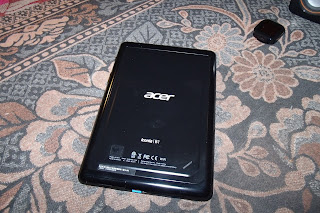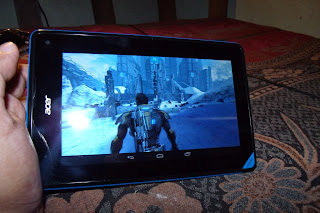Life just got better when android smartphones hit our shelves and it didn’t fail to amaze us with its seamlessly endless improvements in design, features and functionality it is also the most versatile piece of tech that had hit the market and offers a bevy of choices ensuring each individual has its own unique choice. The LG Optimus L7 personifies an android smartphone’s individuality for it targets a unique group of individuals who had a taste for premium phones but struggles to afford one, yes! the L7 is a premium looking phone with an affordable price tag, but was it worth the purchase? Let’s find out
The Optimus L7 have been around the market for quite some time now, at first glance you’ll think it’s a premium phone with an expensive price tag until it finally reveals itself entirely, then it makes you wonder why can all phones look premium and yet cheap, the L7 is a good example that it can be done, instead of the price having to compromise with design and built quality, however as technology gets cheaper by the year I got a gut feeling that we’re gonna see a lot of these in 2014 and the year that follows.
I have to say that the strongest selling point of the L7 is its premium design, even though it is made entirely of plastic; LG successfully gave the L7 a premium look, a mixture of good engineering and clever design. The screen is made of a scratch resistant glass-like plastic which is one of the best I’ve seen so far in this price range and it’s quite responsive too, what gives the L7 a premium look is the clever shiny black plastic bezel along the sides in which a lot of times had been mistaken for a black metal bezel, a good example of clever designing, and what I truly loved about the L7 is its super slim design along with the boxee shape and minimalistic look, add all that together and you’ll have an affordable premium looking phone by the name of the Optimus L7.
(L7 paired with a Liveview watch)
The optimus L7 is a two year old smartphone so having dated android OS doesn't come as a surprise, the L7 runs android 4.0.3 (ICS) and LG won’t be supporting a jellybean upgrade, as we've learned through the years most android devices can not be upgraded to a newer version of android, given only if you'll flash it with a custom ROM (at your own risk), however LG will be supporting firmware updates for the L7, although I find it difficult and inconvenient to update the L7 because it lacks the ability to make updates over the air, you’ll have to sync it with the LG phone suite that’s installed in your PC. But old or not I haven’t got problems using dated firmware for as long as it can perform my everyday task, that will put me at bay for a while before craving for a newer version, but certainly that won’t be the case for early adopters.
The L7 P705 variant does not come with the NFC feature unlike its European counterpart, it's not much of a loss, though, as NFC is a feature that’s hardly been used in our country (Philippines), though I honestly admit it’s better to have it on board than not have it at all. That aside you’re probably wondering where did LG cut down on price? If you have tried one yourself it’s apparent that LG had compromised a lot with the L7’s hardware, generally the L7 is a slow phone and you can blame it on its somewhat anemic specifications, LG provides a 1ghz Qualcomm single core processor and a measly 512 MB of RAM for the L7, not much muscle there, so gaming, multi tasking and web browsing isn’t the nicest thing to do with this phone, however as an everyday phone that organizes your schedules, e-mails and social networking accounts this isn’t a bad choice.
Though the L7 features a 5MP auto focus camera with LED flash, it’s not something to get excited about, for one, using it in dark areas isn’t the best thing to do with this phone but in areas with lots of sun it tells a different story, the 5 mp camera takes sharp pictures outdoors with print quality materials, my only gripe, though, is the slow shutter speed and the camera app which takes time to launch, you'll loss 4-5 seconds of your precious time over and over just trying to open the app, however, having the geo tag feature on board will somehow make-up for that loss, in addition video chat and selfies is something that ain’t new with the L7, the front VGA camera will make those selfie moments as easy as saying cheese.
(Below are samples taken from the L7's 5Mp camera)
I have to admit, multi-media is one of the best thing that the L7 can do; with its sharp 4.3 inch IPS screen watching movies on the go is an experience that’s second only to high-end phones, the screen also provides good viewing angles which is quite impressive for its price. It goes without saying that one can expect excellent music quality with an android device, true enough, that most adopted it as a portable music player, while the L7 has average to good battery performance, using it as a media player though, will drain your battery a lot faster and may struggle to last a day, although in this day and age most tech users already own a power bank so that erases that problem.
All in all the optimus L7 holds its own, experience-wise I can say that it fares better than most single-core 1ghz android smartphones, but needless to say, with the uprising of affordable dual-core android phones I find it difficult for the L7 to still find a market.
LG OPTIMUS L7 SPECIFICATIONS
NETWORK: GSM/3G
OS: Android 4.0.3(ICS), optimus UI
DISPLAY: Corning's Gorilla glass, 4.3 inch IPS 480x800 at 217ppi
PROCESSOR: Qualcomm MSM7227A chipset, Snapdragon 1Ghz Cortex A5, Adreno 200 GPU
MEMORY: 512 RAM/ 4gb internal storage, expandable micro SD card 32gb max
CAMERA: 5MP autofocus/touch-focus with LED flash, Geo-tag, front VGA
OTHERS: Wifi, bluetooth, A-GPS, Wifi Hotspot, proximity sensor, auto-rotation
BATTERY: 1700 mAh

























































